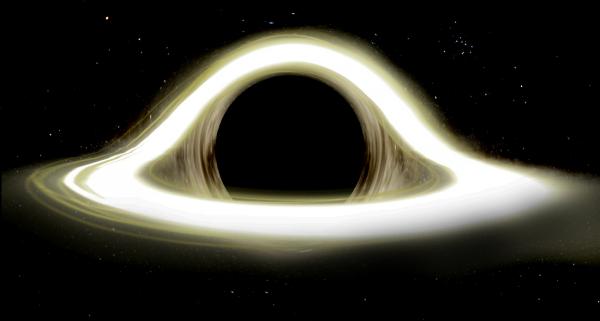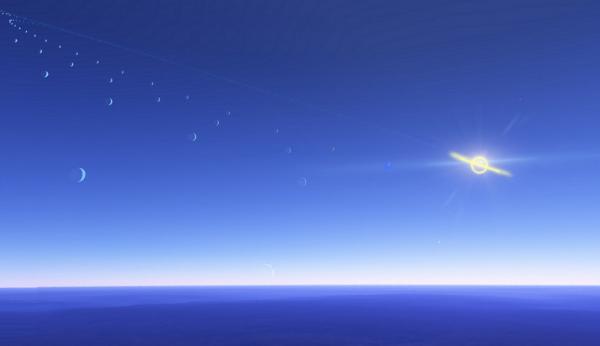BY LETTER
Cormoran SMBH Civilisation, The
Alien Civilisation 209 million light years from Sol | |
 Image from Steve Bowers | |
| The accretion disk around this galactic supermassive black hole appears distorted by the hole's intense gravitational field | |
Orbiting the black hole in hundreds of concentric circles are more than a million planets, some slightly warmer than Earth-like in temperature and many much colder, but most are temperate and capable of supporting a hydrosphere. The circle of planets that is most Earth-like in temperature orbits at a distance of 67 AU, and each planet completes an orbit in 44.7 days, travelling at 5%c. This rapid orbital speed suggests that travel between the rings is relatively difficult, although making a journey between the planets in each ring should be fairly straight forward. There are more than ten thousand planets in each ring, and no planet is less than 6 million kilometres from its neighbor. All of these planets are tidally-locked to the SMBH, but thermal observations of the dark side of these worlds show that most are heated on the dark side to a temperature similar to the illuminated side. The exact mechanism of this heating is unclear, but is almost certainly artificial in nature.
Some of the outermost worlds are still under construction, and long-term observations indicate that these worlds dissipate the heat of their formation very quickly, although (once again) the mechanism is not clear. These worlds are too far away and moving too rapidly to allow detailed observation of the inhabitants, although their spacecraft seem to include accommodation for mobile sophont entities approximately 1.5 metres in height and two metres long.
 Image from Steve Bowers | |
| A simulation of the sky as seen from one of the million planets in this swarm. | |
Mapping these worlds presents some challenges, but there are also certain advantages due to the nature of the system. These planets are moving at 5%c, so any details are severely blurred by movement. Any impermanent feature of these worlds such as a moving sophont or vehicle cannot be seen using current technology. The Cormoran SMBH is at the centre of a galactic hub, and is surrounded by thousands of light years of galactic medium, reducing visibility in many wavelengths.
On the other hand each planet is tidally locked, so observers do not need to compensate for rotation, and each planet returns to the same position every 40 days or so, which would allow a detailed map of surface features to be constructed over time. The galactic medium around Cormoran appears to be artificially clean, to reduce the risks from planets colliding with dust and debris at 5%c. These factors work together to make observation somewhat clearer. It is possible to see that these planets are mostly wilderness, with a few temporary cities on scattered worlds; if this is a civilisation of herbivorous centaurs (as some xenobiologists have suggested), then they seem to prefer the natural look.
Related Articles
Appears in Topics
Development Notes
Text by Steve Bowers
Initially published on 26 September 2018.
Initially published on 26 September 2018.
Additional Information
Inspired by Sean Raymond's article The Black Hole Ultimate Solar System






